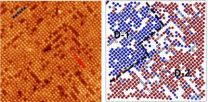(Press-News.org) MADISON — A multi-institutional team of researchers has developed a new nanoscale agent for imaging the gastrointestinal (GI) tract. This safe, noninvasive method for assessing the function and properties of the GI tract in real time could lead to better diagnosis and treatment of gut diseases.
Illnesses such as small bowel bacterial overgrowth, irritable bowel syndrome and inflammatory bowel disease all occur in the intestine and can lead to serious side effects in patients with diseases such as diabetes and Parkinson's.
Until now, there hasn't been a good way to functionally image the intestine. However, in a paper published on July 6 in the journal Nature Nanotechnology, the researchers demonstrated that through a complementary approach using photoacoustic imaging and positron emission tomography (PET), they have created a multimodal functional imaging agent that could be used to perform noninvasive functional imaging of the intestine in real time.
Weibo Cai — an associate professor of radiology, medical physics and biomedical engineering at the University of Wisconsin-Madison — worked collaboratively with Jonathan Lovell, an assistant professor of biomedical engineering at the State University of New York at Buffalo, and Chulhong Kim, an assistant professor of creative information technology engineering at Pohang University of Science and Technology in South Korea. The team developed a family of nanoparticles that can provide good optical contrast for imaging — yet avoid absorption into the body and withstand the harsh conditions of the stomach and intestine.
Currently, patients drink a chalky liquid called barium and technicians view the intestine through X-rays and ultrasound. These methods, however, have many limitations, including accessibility and the possibility of radiation exposure.
The researchers' nanoparticles contain bright dyes. Patients still will drink a liquid, but it will contain the nanoparticles and allow an imaging technician to noninvasively view the illuminated intestine with photoacoustic imaging. "We can actually see the movement of the intestine in real time," Lovell says.
Cai and Lovell worked collaboratively to use two imaging techniques. Cai specializes in PET imaging — which uses radioisotope-based tracers and is used in health care settings for noninvasive, whole-body imaging. Lovell and Kim's expertise is in photoacoustic imaging, a technique that draws on ultrasound to generate high-definition images through light-based imaging.
While photoacoustic techniques yield high-definition images, PET imaging can penetrate deeper and image the entire body. Combining the two delivers the most information possible: high-definition images, images deep inside the body and a view of the intestine in relation to the entire body.
So far, the researchers have conducted successful test trials in mice and are hoping to move to human trials soon. "This is one of the first studies using both imaging techniques," Cai says. "The two imaging techniques work well together and get us all of the information that we need."
Both Lovell and Cai are excited about what the new imaging agent might mean for patients. "We could potentially induce a paradigm shift that allows for much more routine examination of the intestine function," Lovell says. "That would really benefit overall health."
Cai hopes the imaging agent can be targeted to look for certain disease-related markers and be used in therapeutic applications in the near future. "It is everything I would hope for in an imaging agent, and it is safe since we use FDA-approved agents to make these nanoparticles. That is why I am so excited about this," he says. "These are the promising first steps."
INFORMATION:
Grants from the National Institutes of Health, the Department of Defense and the Korean Ministry of Science funded the research. Additional authors on the paper include Yumiao Zhang, Mansik Jeon, Laurie J. Rich, Hao Hong, Jumin Geng, Yin Zhang, Sixiang Shi, Todd E. Barnhart, Paschalis Alexandridis, Jan D. Huizinga and Mukund Seshadri.
Jasmine Sola
perspective@engr.wisc.edu
New imaging agent provides better picture of the gut
2014-07-24
ELSE PRESS RELEASES FROM THIS DATE:
Brain's dynamic duel underlies win-win choices
2014-07-24
People choosing between two or more equally positive outcomes experience paradoxical feelings of pleasure and anxiety, feelings associated with activity in different regions of the brain, according to research led by Amitai Shenhav, an associate research scholar at the Princeton Neuroscience Institute at Princeton University.
In one experiment, 42 people rated the desirability of more than 300 products using an auction-like procedure. Then they looked at images of paired products with different or similar values and were asked to choose between them. Their brain activity ...
TGen-led study seeks to understand why some HIV-positive men are more infectious
2014-07-24
FLAGSTAFF, Ariz. — July 24, 2014 — A new study led by the Translational Genomics Research Institute (TGen) provides insights into the interplay among bacteria, viruses and the immune system during HIV infection.
Currently, doctors measure HIV-positive men's infectivity — their potential to infect others — based on their blood viral load. However, some men produce large amounts of virus in their semen despite having low levels in their blood. Researchers call this "compartmentalization," where different levels of the virus can be found in different parts of the body; in ...
Parched West is using up underground water, UCI, NASA find
2014-07-24
Irvine, Calif., July 24, 2014 — A new study by University of California, Irvine and NASA scientists finds more than 75 percent of the water loss in the drought-stricken Colorado River Basin since late 2004 came from underground resources. The extent of groundwater loss may pose a greater threat to the water supply of the western United States than previously thought.
This study is the first to quantify the amount that groundwater contributes to the water needs of western states. According to the U.S. Bureau of Reclamation, the federal water management agency, the basin ...
ORNL study reveals new characteristics of complex oxide surfaces
2014-07-24
OAK RIDGE, Tenn., July 24, 2014 -- A novel combination of microscopy and data processing has given researchers at the Department of Energy's Oak Ridge National Laboratory an unprecedented look at the surface of a material known for its unusual physical and electrochemical properties.
The research team led by ORNL's Zheng Gai examined how oxygen affects the surface of a perovskite manganite, a complex material that exhibits dramatic magnetic and electronic behavior. The new avenue to understand surface behavior could benefit researchers who are interested in using a wide ...
Earlier Stone Age artifacts found in Northern Cape of South Africa
2014-07-24
Excavations at an archaeological site at Kathu in the Northern Cape province of South Africa have produced tens of thousands of Earlier Stone Age artifacts, including hand axes and other tools. These discoveries were made by archaeologists from the University of Cape Town (UCT), South Africa and the University of Toronto (U of T), in collaboration with the McGregor Museum in Kimberley, South Africa.
The archaeologists' research on the Kathu Townlands site, one of the richest early prehistoric archaeological sites in South Africa, was published in the journal, PLOS ONE, ...
BU researchers discover that Klotho is neuroprotective against Alzheimer's disease
2014-07-24
(Boston)—Boston University School of Medicine researchers may have found a way to delay or even prevent Alzheimer's disease (AD). They discovered that pre-treatment of neurons with the anti-aging protein Klotho can prevent neuron death in the presence of the toxic amyloid protein and glutamate. These findings currently appear in the Journal of Biological Chemistry.
Alzheimer's disease is the most frequent age-related dementia affecting 5.4 million Americans including 13 percent of people age 65 and older and more than 40 percent of people over the age of 85. In AD the ...
Creating sustainable STEM teacher preparation programs
2014-07-24
A new study has identified two factors that characterize sustainable university and college programs designed to increase the production of highly qualified physics teachers. Specifically, one or more faculty members who choose to champion physics teacher education in combination with institutional motivation and commitment can ensure that such initiatives remain viable. Science, Technology, Engineering and Math (STEM) teacher shortages are especially acute in physics, and the study points the way for institutions seeking to increase the number of STEM graduates prepared ...
'Experiential products' provide same happiness boost as experiences, study finds
2014-07-24
SAN FRANCISCO, July 24, 2014 -- Material items designed to create or enhance an experience, also known as "experiential products," can make shoppers just as happy as life experiences, according to new research from San Francisco State University.
Researchers found such products satisfy a different, but equally powerful, psychological need than experiential purchases. While life experiences help consumers feel closer to others, experiential products such as books, sporting goods, video games or musical instruments allow them to utilize and develop new skills and knowledge, ...
Incomplete HPV vaccination may offer some protection
2014-07-24
(Boston)--Minority women who received the Human Papillomavirus Vaccination (HPV) even after becoming sexually active had lower rates of abnormal Pap test results than those who were never vaccinated. These findings appear in the journal Sexually Transmitted Diseases.
Researchers from Boston University School of Public Health and School of Medicine conducted a cross-sectional study of 235 women age 21 to 30 undergoing routine cervical cytology testing. HPV status and demographic and behavioral characteristics were self-reported and verified with electronic medical records.
"Although ...
Stanford study shows how to power California with wind, water and sun
2014-07-24
Imagine a smog-free Los Angeles, where electric cars ply silent freeways, solar panels blanket rooftops and power plants run on heat from beneath the earth, from howling winds and from the blazing desert sun.
A new Stanford study finds that it is technically and economically feasible to convert California's all-purpose energy infrastructure to one powered by clean, renewable energy. Published in Energy, the plan shows the way to a sustainable, inexpensive and reliable energy supply in California that could create tens of thousands of jobs and save billions of dollars ...


